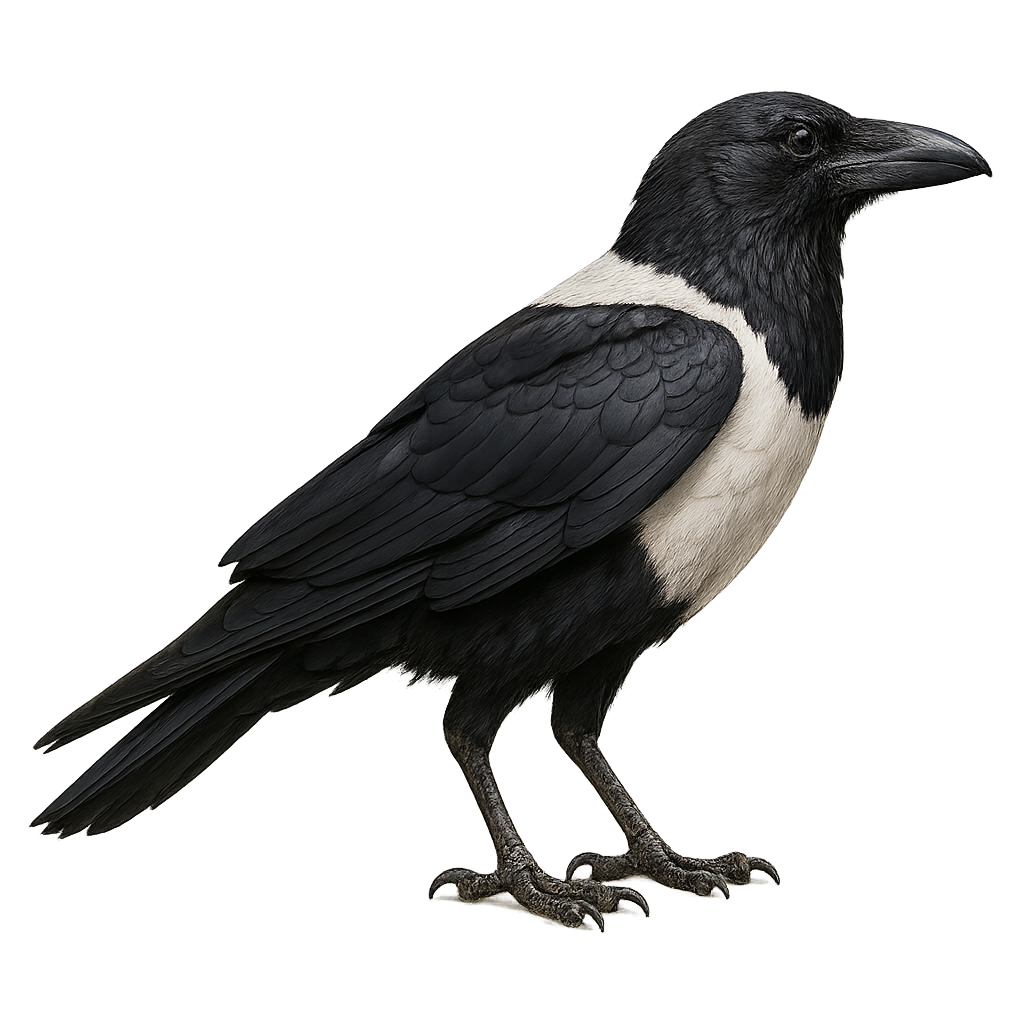Your wildlife photography guide.
Explore the pied crow in detail, study its behavior, prepare your shots.
Where to observe and photograph the pied crow in the wild
Learn where and when to spot the pied crow in the wild, how to identify the species based on distinctive features, and what natural environments it inhabits. The WildlifePhotographer app offers tailored photography tips that reflect the pied crow’s behavior, helping you capture better wildlife images. Explore the full species profile for key information including description, habitat, active periods, and approach techniques.
Pied Crow
Scientific name: Corvus albus

IUCN Status: Least Concern
Family: CORVIDAE
Group: Birds
Sensitivity to human approach: Suspicious
Minimum approach distance: 10 m
Courtship display: May to June
Incubation: 18-20 jours
Hatchings: May to July
Habitat:
Savannas, urban areas, open forests
Activity period :
Primarily active during the day, with peak activity in the morning and late afternoon.
Identification and description:
The Pied Crow, Corvus albus, is a medium-sized bird easily recognized by its distinctive black and white plumage. Its head, wings, and tail are black, while its neck and chest are bright white. This striking contrast makes it unique among corvids. It is widespread in sub-Saharan Africa, adapting to various habitats, from savannas to urban areas. An opportunist, it feeds on a variety of foods, from insects to human waste. Its intelligence and problem-solving abilities are remarkable, typical characteristics of crows. Sociable, it often forms noisy groups, communicating through a series of harsh calls.
Recommended lens:
400mm – adjust based on distance, desired framing (portrait or habitat), and approach conditions.
Photography tips:
To photograph the Pied Crow, focus on open areas where it is often visible. Use a 400mm or longer telephoto lens to capture details without disturbing the bird. Be patient and observe its behavior to anticipate its movements. The best lighting is early in the morning or late in the afternoon. Take advantage of these times to get shots with soft natural lighting. If possible, include elements of its habitat to enrich the composition of your photo.
The WildlifePhotographer App is coming soon!
Be the first to explore the best nature spots, track rutting seasons, log your observations, and observe more wildlife.
Already 1 430 wildlife lovers subscribed worldwide

